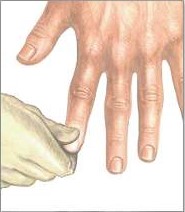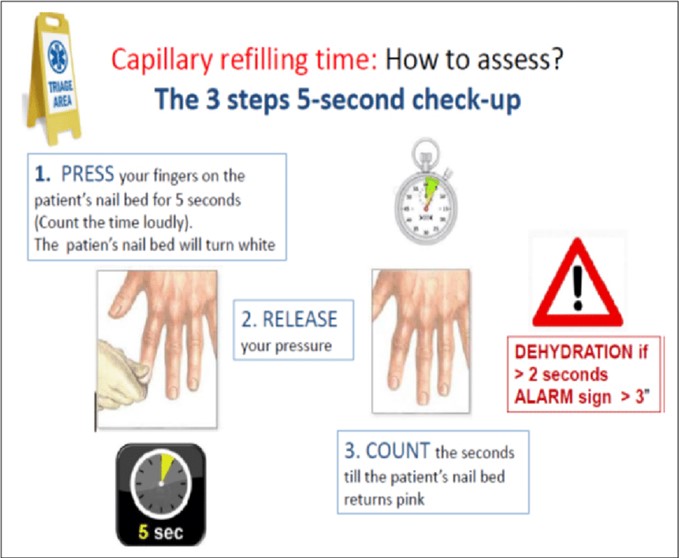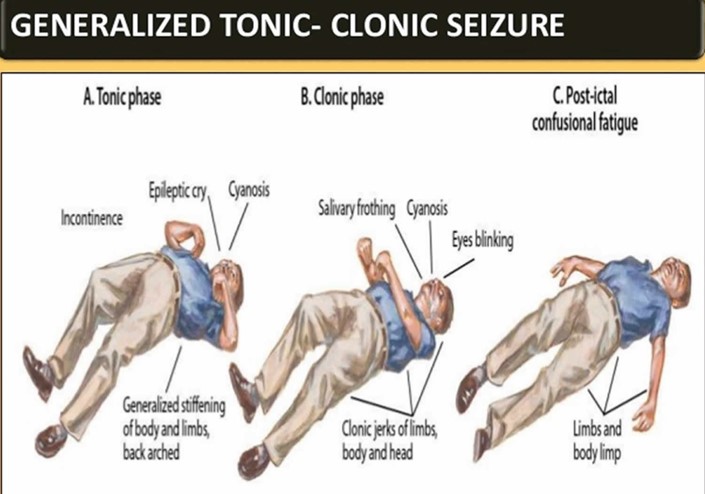The practical nurse (PN) applies and then releases pressure to a client's fingernail as seen in the photo. Normal nail color returns in 2 seconds. Which action should the PN take?

Report abnormal findings to the charge nurse.
Observe for blanching of the nailbed.
Repeat the process with a different nailbed.
Document the capillary refill time.
The Correct Answer is D
- Capillary refill time is a test that measures how quickly the blood returns to the tissues after pressure is applied and released on a nailbed or a fingertip. It is an indicator of peripheral circulation and tissue perfusion.
- To perform the capillary refill test, the examiner should press firmly on the nailbed or fingertip for a few seconds, then release the pressure and observe how long it takes for the normal color to return. The normal capillary refill time is less than 2 seconds .
- In the photo, the practical nurse (PN) applies and then releases pressure to a client's fingernail. Normal nail color returns in 2 seconds, which indicates a normal capillary refill time and adequate peripheral circulation. This is a normal and expected finding that does not require any further action, except for documentation.
- Therefore, option D is the correct answer, as it reflects the appropriate and standard nursing practice of documenting any assessment findings in the client's chart. Option D also implies that the PN does not need to report, observe, or repeat anything else related to the capillary refill test, as it was done correctly and yielded normal results.
- Options A, B, and C are incorrect answers, as they do not reflect the appropriate or necessary actions for the PN to take after performing a normal capillary refill test.

Nursing Test Bank
Naxlex Comprehensive Predictor Exams
Related Questions
Correct Answer is A
Explanation
The statement "I realize that life must go on, but sometimes I wonder why" suggests that the client is experiencing ongoing feelings of sadness, questioning, and possibly struggling to find meaning or purpose in life after the loss of her spouse. This statement indicates a need for bereavement counseling to help the client navigate the grieving process and address the emotional challenges associated with the loss.
Correct Answer is ["A","D","E"]
Explanation
During a generalized tonic-clonic seizure, it is important for the practical nurse (PN) to prioritize the safety and well-being of the child. The correct actions to implement immediately are:
A. Observe the progression of the seizure: The PN should closely observe the seizure to gather important information that can be helpful for medical professionals in assessing the seizure's characteristics and duration.
D. Pad the side rails with pillows: Padding the side rails of the bed with pillows helps to prevent the child from injuring themselves by hitting the side rails during the seizure.
E. Loosen clothing around the neck: Loosening any tight clothing around the child's neck helps to ensure adequate breathing and prevent any constriction or discomfort during the seizure.
B. Hold the extremities close to the body: This action is not recommended during a seizure as it may increase the risk of injury to the child or the PN.
C. Insert a tongue blade between the teeth: It is not recommended to insert any object, including a tongue blade, between the teeth of a person experiencing a seizure. This can cause injury to the person's mouth or teeth and is no longer considered an appropriate intervention for seizures.

Whether you are a student looking to ace your exams or a practicing nurse seeking to enhance your expertise , our nursing education contents will empower you with the confidence and competence to make a difference in the lives of patients and become a respected leader in the healthcare field.
Visit Naxlex, invest in your future and unlock endless possibilities with our unparalleled nursing education contents today
Report Wrong Answer on the Current Question
Do you disagree with the answer? If yes, what is your expected answer? Explain.
Kindly be descriptive with the issue you are facing.
